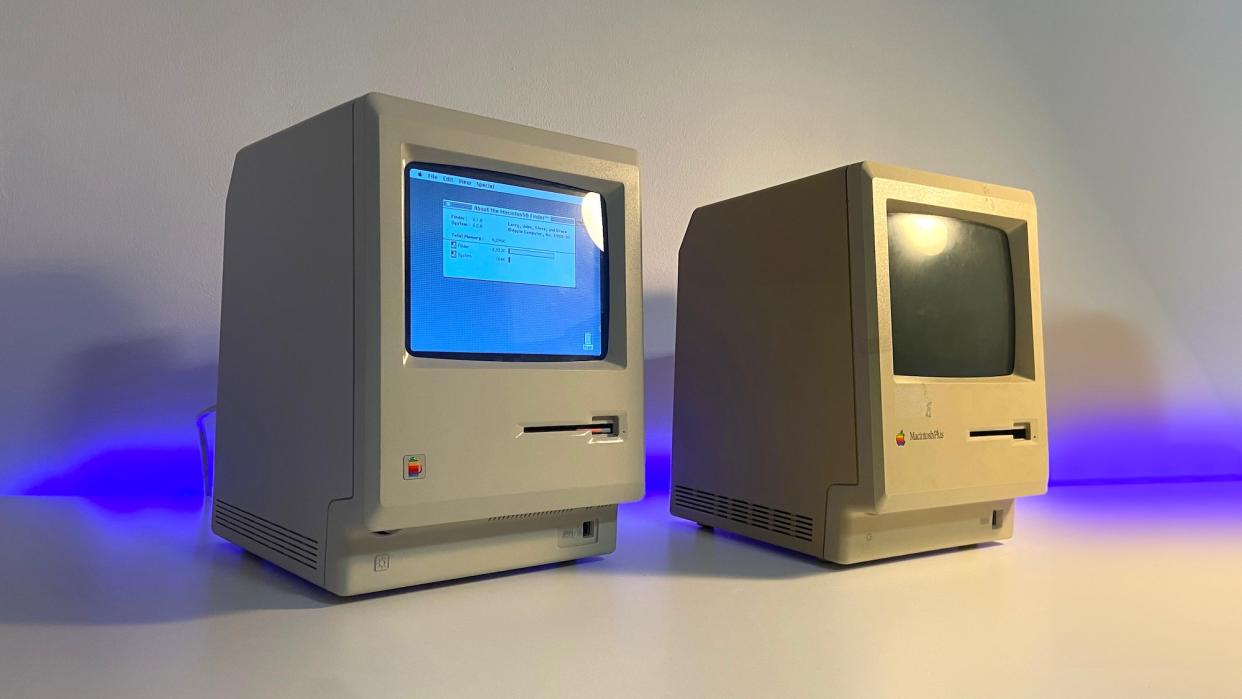A designer 3D printed a working clone of the iconic Mac Plus

Got around 40 free weekends in the near future? Possess a 3D printer, extensive knowledge of vintage computer coding, soldering techniques, and near-superhuman patience? Then you, too, could be the proud owner of a “Brewintosh Plus,” a maddeningly accurate, completely working clone of Apple’s iconic Macintosh Plus computer system.
It might be hard to imagine, but there was a time when 1Mb of RAM was a big deal—and in 1986, the Mac Plus contained such immense processing power. To call Apple’s third Macintosh release a success is arguably an understatement. Until 2018, it remained the company’s longest-produced Macintosh model, with operating system updates made regularly until 1996.
https://www.youtube.com/watch?v=7N9oz4Ylzm4\u0026ab_channel=KevinNoki
It’s a pivotal piece of tech history, but finding one in decent condition, let alone complete working order, can be difficult after nearly four decades since its debut. For some collectors like Kevin Noki, however, the allure of tinkering with the iconic, retro hardware is too strong to resist. Unfortunately, it can be even harder to obtain a Mac Plus in places like Germany—where Noki happens to live.
But after scouring eBay for some time, Noki finally found and purchased an original, worse-for-wear 1Mb Macintosh Plus from eBay. Despite a broken power supply and missing floppy disk drive, one could technically emulate the original computer system simply by installing a Raspberry Pi and calling it a day—but that wouldn't be much of a challenge, would it?
[Related: Macs are better at video gaming (emulators) than PCs. Here’s how to set up yours.]
Instead, Noki decided to use his vintage piece of tech history as a template for something much more accurate, if a bit more complicated: He built his own Mac Plus computer from the literal ground up.
“We are talking a properly sized, colored, and textured box, which takes wall power, swallows 3.5-inch disks, works with both telephone-cord and ADB Apple keyboards and mice, has a screen dimmer, and makes the startup sound (the beep, not the chord),” Ars Technica summarized earlier this week.
But even that laundry list of features doesn’t properly do Noki’s journey justice. At least 40 individual parts were measured, rendered into production specs through AutoDesk Fusion 460, and 3D-printed to create exact clones of the desktop’s many components. Then there was augmenting a USB floppy drive reader to use an Arduino-controlled motor that Noki coded himself, installing said floppy drive… not to mention soldering and wiring internal speakers, dyeing external parts to match the exact Mac Plus case color scheme, and even creating replicas of all its original labels, stickers, and raised-text stereotypes. But when it comes to picking the most difficult aspect of the entire saga, however, Noki doesn’t mince words.
“Honestly, everything was somewhat tough,” he tells PopSci, although he would wager that figuring out how to use an emulator to communicate with the rebuilt hardware was his biggest hurdle. “For instance, determining when to eject the floppy disk was particularly tricky, especially given my limited programming skills,” Noki says.
“Limited programming skills” is honestly pretty humble after watching Noki’s nearly hour-long YouTube rundown, which is genuinely worth an entire watch. Now that the job is done, the designer tells PopSci he’s gained an even greater respect for emulator programmers, “particularly the team responsible for the Mini vMac,” which simulates classic multiple Macintosh OS versions.
“Their dedication not only preserves computing history but also ensures its accessibility for generations to come, and for that, I'm incredibly thankful,” he says.
That thanks can certainly be extended to Noki, whose Brewintosh Plus and accompanying step-by-step guide now offers its own unique contribution to computing history preservation and accessibility.

